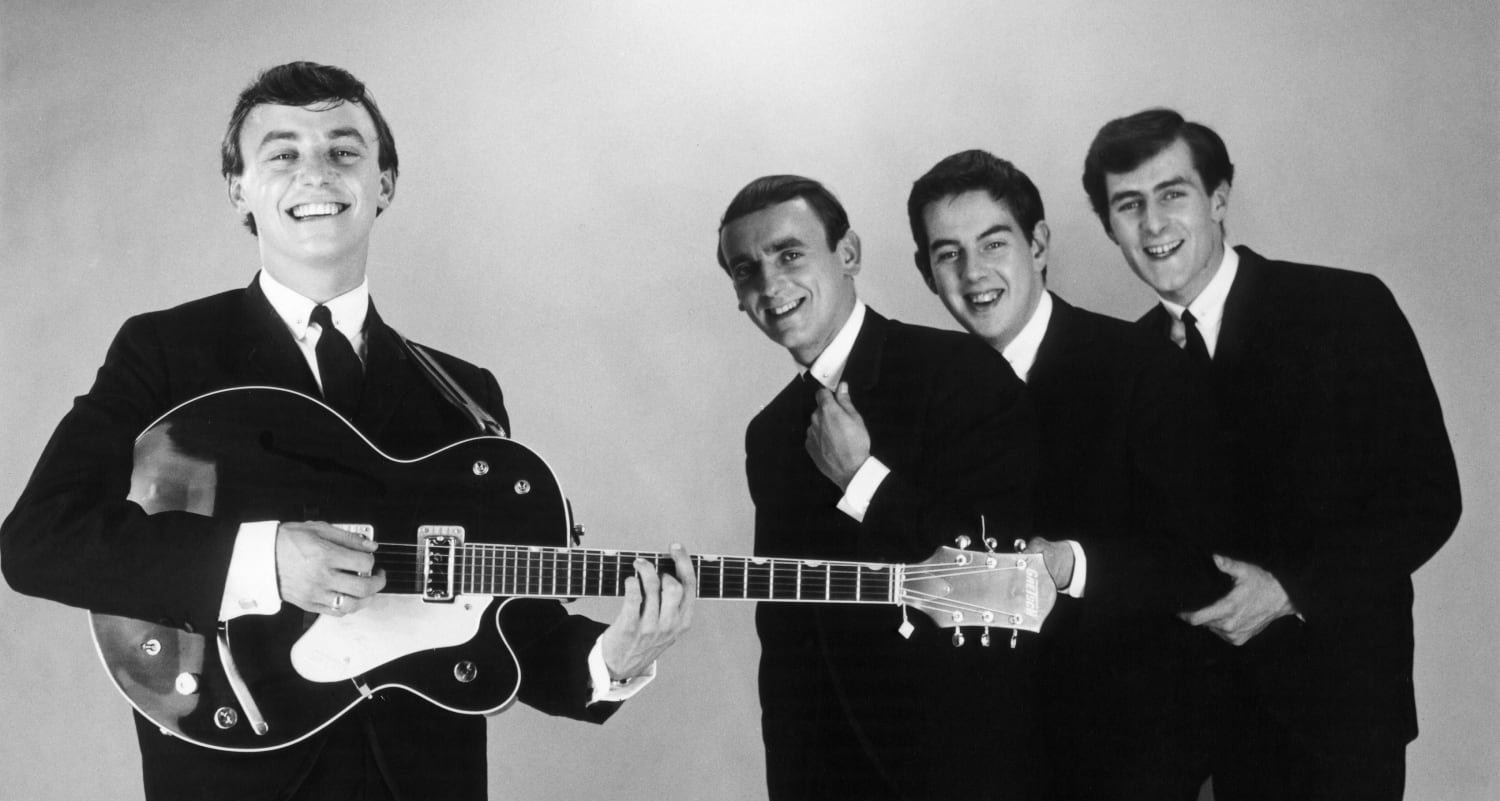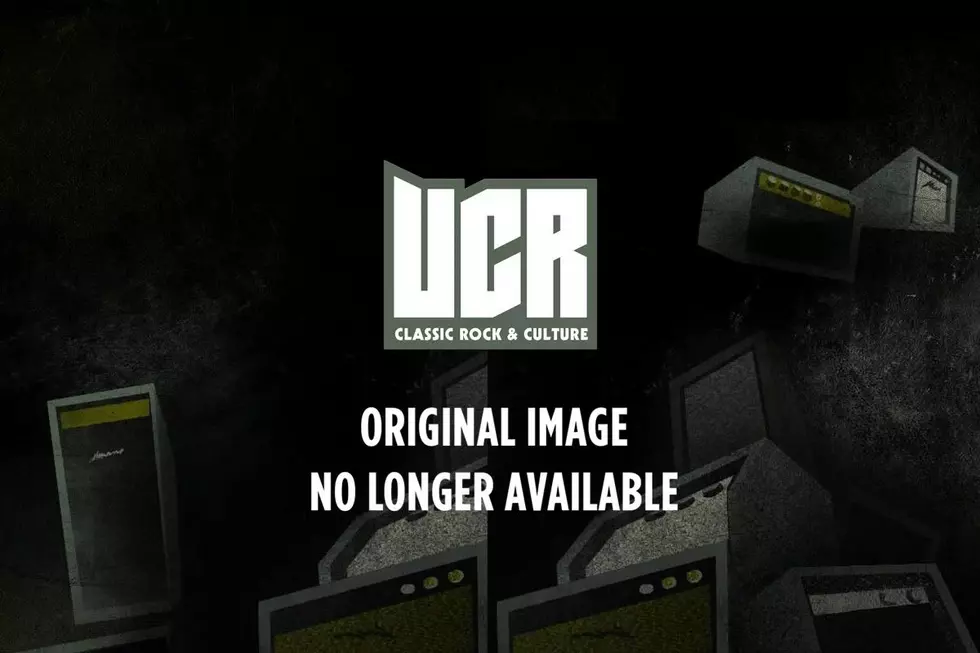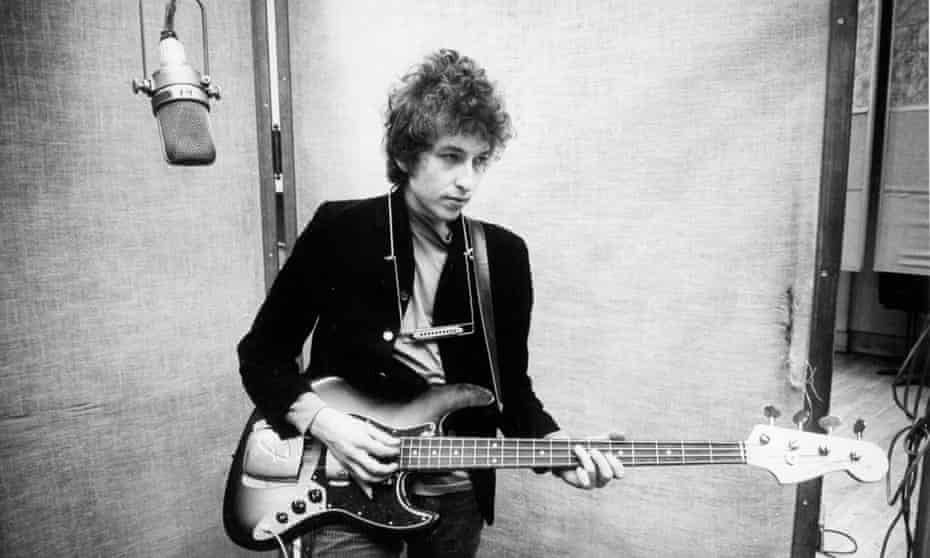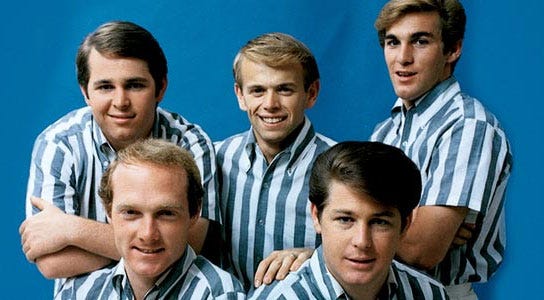The Beatles are undeniably one of the most important, influential and significant bands in the history of musical culture, forging a legacy that will likely only grow over many centuries. Although they themselves were so highly regarded, they did not do it on their own. Asides from their own intense yet friendly rivalry, they had much more musical opposition that pushed ‘The Fab Four’ to new heights. Whether in the UK or across the pond, here are the people who were The Beatles’ greatest rivals.
10. Herman’s Hermits

Friends from their early days in the music industry, Peter Noone and the Hermits would eventually become stiff competition for “The Fab Four” as main contenders to The Beatles in the early stages of the British Invasion from 1963-1965.
With Peter Noone and John Lennon especially good friends, the lead singer of the Manchester band was famous for his appearances in Coronation Street, carrying his acting career into musical success. When just a teenager, Noone befriended Lennon and McCartney and released his first single with his Hermits titled “I’m Into Something Good” which became a debut UK number one although they would have no more chart-toppers in Britain with fame best found in America.
By 1965, they had released two American number ones, “Mrs Brown, You’ve Got a Lovely Daughter” and maybe their best-known song “I’m Henry the Eighth, I Am”. Whether it was when he missed his cue at a concert, being busy chatting with John Lennon or the high point of their career, the performance of their monarch-based hit on the Ed Sullivan Show, their live performances were always energetic. In that same year, HH were outselling The Beatles in the US, coining the phrase “Hermania”, proving to be massive opposition to the Fab Four. With the popularity of The Monkees, the band soon faded away. Yet in their heyday, they scored 11 US top 10s and sold over 40 million records, outsold The Beatles for a portion of 1965 and share an interesting story.
Noone asked the band to write a song for him – as The Fab Four had done with other acts – and Peter soon went through a labelled cupboard of cassettes and saw one reading “For No One” and Peter thought it was for himself but was actually a track for the Revolver album.
9. Gerry And The Pacemakers

Even from the early days in Liverpool’s Cavern Club and in Hamburg, Germany, Gerry Marsden and his mates were known musical rivals and friends with The Beatles. Although they weren’t massive in American unlike other rivals such as Herman’s Hermits and The Dave Clark Five, they had groovy and rhythmic hits to fight The Fab Four. The group’s output was similar to that of The Beatles, with their songs being produced by the same person (George Martin) and being managed by the same person: Brian Epstein.
In early 1962, Gerry and The Pacemakers got their debut single ‘How Do You Do It?’ to number one after The Beatles rejected the song. It was taken off the top by The Beatles third single and first number one ‘From Me To You’. However, firing back, ‘From Me To You’ was taken off the top by ‘I Like It’ by Gerry and company, a fast-paced, upbeat single which drew similarities to The Beatles. Later ‘You’ll Never Walk Alone’ got to the top only to be dethroned by the massive Beatles single ‘She Loves You’.
Gerry and the band went on to have more hits such as ‘Don’t Let The Sun Catch You Crying’, ‘I’m The One’, ‘Ferry Cross The Mersey’ whilst The Beatles only grew. The band is remembered for also becoming the first musical act to have their first three singles get to number 1 in the holy trinity of ‘How Do You Do It?’ followed by ‘I Like It’ and ‘You’ll Never Walk Alone’. Many of these songs remain staples of the forlorn rivalry and are still performed regularly today such as ‘You’ll Never Walk Alone’ and ‘Ferry Cross The Mersey’ being unofficial anthems for Liverpool, being performed at football games.
8. The Byrds

Although they became commonly used in the 70s, the twelve-string guitar was brought to the forefront by The Byrds. With their jangly sounds, it was inspired by The Beatles on tracks such as ‘Ticket To Ride’ and ‘A Hard Day’s Night’.
Soon, The Byrds had really taken to the sound with their hits incorporating a twelve-string guitar accompanied with a psychedelic sound on top of their song writing ability that involved a combination of Beatles and Bob Dylan. They burst onto the scene in 1965, topping charts with an altered iteration of Bob Dylan track ‘Mr Tambourine Man’, sloppy solos in ‘Eight Miles High’ and Biblical tune ‘Turn! Turn! Turn!’. The Beatles became close friends to The Byrds, sending demo tapes and duplicating a similar sound. They also introduced a jangly sound to their music which The Beatles replicated – this sound soon became known as ‘jangle pop’.
The popular new folk sound The Byrds had created soon opened the door to other acts of the same genre like Simon and Garfunkel, Peter, Paul and Mary and The Mamas and The Papas. It also heavily inspired significant musical direction for The Beatles on the post/semi-experimental album ‘Help!’ in 1965 and more instrumentally complex EP ‘Rubber Soul’. Both album’s success and greatness are often attributed to its folk works such as ‘I’ve Just Seen A Face’ and more significantly ‘Norwegian Wood (This Bird Has Flown)’.
Although The Beatles spoke negatively about 12-string bands like The Hollies, The Byrds were a band who pushed the envelope for The Beatles and set the bar for what was still to be done in unique genres.
7. The Monkees

For many people who remember The Beatles, it may be best from the cartoon era with The Beatles performing ‘Yellow Submarine’ in blistering colours. However, also in the heyday of cartoons were commercial American band The Monkees. With their own TV show and immense growing popularity towards their positive pop sound, they would go on to outsell all others acts in 1967, including The Beatles and The Rolling Stones combined.
Within their debut year, they would release hits such as ‘I’m A Believer’ and ‘Last Train To Clarksville’. When they started, they had songs written by Neil Diamond with drummer Micky Dolenz unable to play the instrument. The Monkees TV even featured Mike Nesmith of The Monkees throwing a dart at a dart board with Ringo Starr’s face on, a blaring song of ‘Good Morning, Good Morning’ and many references to ‘A Hard Day’s Night’.
The clashing of the huge boybands saw young girls across the country having to choose between band members of similar roles. This included Davy Jones vs Paul McCartney both heartthrobs with sombre ballads, Mike Nesmith vs John Lennon as the two respective leaders and Ringo Starr vs Peter Tork as both were the cute but seemingly silly-in-personality members of their respective bands.
The Monkees’s Davy Jones also appeared on an episode of ‘Oliver!’ on the same broadcast as The Beatles’s historic Ed Sullivan Show performance. Lennon and Harrison became friends with the group until both groups would break up.
6. The Who

Not many rivalries go on to create a whole new genre, but this one did.
In 1967, The Who released psychedelic tune, ‘I Can See For Miles’. A report on the song by a journalist stated that it was the “heaviest” song that the listener had ever heard. Reading this and taking it on as a challenge, Paul McCartney set out to make his own track even heavier without even hearing The Who’s song. For The Beatles’ eponymous album, also known as The White Album, Paul McCartney wrote ‘Helter Skelter’. This was recorded with violently loud drums, heavy guitar work and screamed vocals, becoming the blueprint for heavy metal music.
It was based around the theme of the British amusement park ride but was thought of very differently by a particular Charles Manson. It was also written as critics had called McCartney the ‘soppy one’ who only wrote ballads so Paul went out his way to debunk this claim. Its end is now legendary with a shouted end by Ringo Starr where he yells “I got blisters on my fingers!”. The whole album features rebellious songs such as ‘Everybody’s Got Something To Hide Except For Me and My Monkey’ and ‘Revolution’ (single release) but this truly stood out and all from a newspaper report of a song McCartney had never heard.
5. Elvis Presley

Although they may be the two best-known musical artists of the modern age, Presley and The Beatles had a popularity clash but were never quite that close in a competitive nature.
The Beatles really picked up the template of their sound listening to 50s American Rock ‘N’ Roll. They looked up to Elvis but as Presley did not write his own songs, drew song writing influence from self-writing acts such as Chuck Berry, Buddy Holly and Carl Perkins. Presley dominated the musical world the decade before the arrival of John, Paul, George and Ringo and took the moniker of music’s biggest act from Presley in the 60s.
The Beatles met Elvis a few times with Paul even playing bass with Presley. Elvis had slowed down in his career due to declining health and his draft to the army from 1958 through 1960. However, by the end, maybe in part by the posthumous singles, Elvis has docked the most UK number ones of any artist with 21, to The Beatles’ 17. Yet in the USA, The Beatles still hold the record with 20 chart-toppers.
4. Bob Dylan

Often considered the greatest songwriter of all time, Bob Dylan became an elected voice of the people after The Beatles had made their presence in America.
The Beatles performed on the commercial Ed Sullivan Show whilst Dylan on the independent folk circuit, the largest of which was the Newport Folk Festival. The Beatles wrote simple love songs that grabbed the nation’s hearts including ‘All My Loving opening: “Close your eyes and I’ll kiss you” while Dylan had more philosophical and poignant lyrics such as ‘The Times They Are A-Changing starting, “Come gather ‘round people wherever you roam”. These two incredibly varying musicians locked horns through separate roots to success by 1964.
The Beatles were in awe of Dylan with his style of politically-charged writing and this influence led “The Fab Four’s” expanding of song writing abilities as they moved on to more complex compositions away from young girl-pleasing pop tunes into broader topics. Following the American’s anthems, the band delved straight into pop-culture topics and surrounding social events that were plentiful in 1960s USA. It was from the writing and folk elements that the Liverpudlian foursome created albums like ‘Rubber Soul’ and ‘The Beatles’.
John has called many of these works as taking place in his “Dylan period”. It is also said it is Bob who turned the band onto pot, giving the group their first taste of the drug at a show. Soon they had shared cabs, showing the mutual nature of their rivalry. Their relationship was hampered by Dylan’s motorcycle accident in 1966, with them meeting for the last time in 1969. In both respective solo careers, they have written songs that are about or reference one another.
3. The Dave Clark 5
In 1963-1965, The Beatles were rising from Liverpool to global fame and their biggest obstacle – the rising popularity of a Tottenham group The Dave Clark Five.
Lead by Mike Smith and drummer Dave Clark, teenage girls were torn – Clark or McCartney, Smith or Lennon? The joyous quintet had a plethora of top ten hits in the UK and US with a number 1 single in each – in the US it was Bobby Day cover ‘Over and Over’ and in the UK ‘Glad All Over’ took the top.
It started in 1963 when The Beatles megahit ‘I Want To Hold Your Hand’ was finally taken off number one by DC5. The rivalry was massive – the two biggest bands facing off in musical war. It continued through the years with the DC5 racking up 18 Ed Sullivan Show appearances, inspired by The Beatles’ historic appearance in February 1964. Although the rivalry largely fizzled out in 1965 thanks to the arrival of a certain London band featuring Mick Jagger.
The DC5 had a number two single get stopped from the top by The Beatles in 1967 when a re-release by the DC5 stalled at two held off by ‘Hello Goodbye’. In terms of significance, it helped the growth and development of The Beatles sound as the Merseybeat versus Tottenham competition had swept the nation.
2. The Beach Boys

A lot of British Invasion bands in the 60s incorporated complex harmonies and melodies in their sound such as The Hollies, The Zombies and The Troggs but maybe the greatest to use them weren’t even British.
The Beach Boys burst onto the scene around the same time as The Beatles in 1962 but at this point Wilson and co. were just a happy-go-lucky surfer band who had great melodies and harmonies yet were still some distance from their greatest work. The Beatles of course exploded in 1964 and The Beach Boys were slowly evolving their sound at this time. This led to film ‘A Hard Day’s Night’ being a massive success for the Fab Four, in 1965, The Beach Boys released their own film ‘The Beach Boys Today’.
Brian praised the Beatles for experimental album ‘Rubber Soul’ as one of the greatest albums of all time with “not one poor track”, but little did anyone know this would spark an even better album. ‘Pet Sounds’ was released in 1966 to much fanfare from all including Paul McCartney. With tracks like ‘Wouldn’t It Be Nice’ and ‘God Only Knows’, with work bettering The Beatles’ efforts. No wonder it is one of McCartney’s favourite albums and why they were influenced by it!
In retaliation, ‘Revolver’ by The Beatles came out, often similar to the Wilson-led band in sound. The Beach Boys fought back, releasing hit single ‘Good Vibrations’ later that year. The song was a best-seller, hitting number 1 all over the world. This track was a phenomenal production: costing over $50,000 to make – the most expensive song at the time due use of the Theremin. With 90 hours of recordings over multiple studios, it was reduced to 4 minutes of brilliance.
However, whilst working on his ‘Smile’ album, Brian Wilson’s mental state and personal demons hindered his work. Finally, after hearing the momentous ‘Strawberry Fields Forever’ and the release of ‘Sgt. Peppers’ later that year, Brian admitted defeat to the awesome catalogue of work by The Beatles with their further developing sound.
1. The Rolling Stones

From the opening blast of ‘(I Can’t Get No) Satisfaction’, war was waged on The Beatles. After having feuded with pop groups like Herman’s Hermits, The Dave Clark 5 and Gerry and The Pacemakers, a rock band came and shattered the world.
Starting off as a blues cover band, The Rolling Stones had their first hit song written by Lennon and McCartney – a track off ‘With The Beatles’ originally sung by Ringo called ‘I Want To Be Your Man’. The Beatles showed little care for the track but soon the Stones were pumping out hit after hit after hit after their debut.
‘Get Off My Cloud’ was the band’s first UK number one and was followed by appearances on The Ed Sullivan Show and American television – performing songs such as ‘The Last Time’, Buddy Holly re-imagining ‘Not Fade Away’ and ‘It’s All Over Now’. They were similarly dressed to The Beatles, similar in musical style and of course both were British but they were very different.
Constantly harassed by police, they nevertheless got MBE’s and were already heroes. With founder Brian Jones, the group used things the Beatles had influenced – sitars, psychedelic tones and their style of writing. This has lead to some understandable but largely unfair claims The Stones have only copied what The Beatles have done. Cases for this include the similarity of albums covers such as ‘Sgt Peppers’ compared to ‘Their Satanic Majesties Request’ and similar titles like The Beatles’ ‘Let It Be’ followed by The Stones’ ‘Let It Bleed’. Yet it seemed this rivalry fuelled both sides. For example not only did Mick Jagger see The Beatles perform ‘All You Need Is Love’ on the first live global TV network broadcast but members of The Beatles performed at The Rolling Stones’ Rock and Roll Circus.
The feud calmed down at the end of the 60s as The Beatles started winding down. However, The Stones came back with a vengeance in the 70s with ‘Sticky Fingers’ and ‘Exile on Main Street’. These cemented them as the solid Beatles rival. Still good friends, Mick inducted the Fab Four into the Rock and Roll Hall of Fame documenting both bands’ careers. Still going today, The Stones are The Beatles very greatest rivals.


